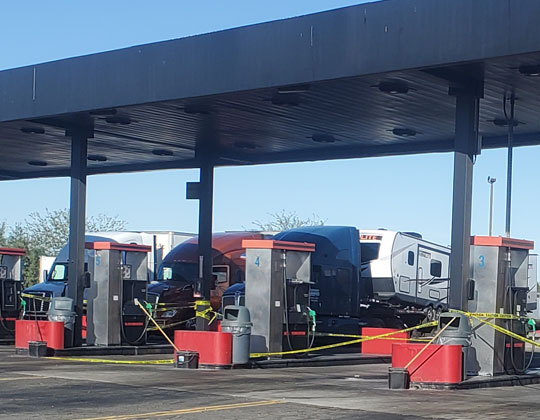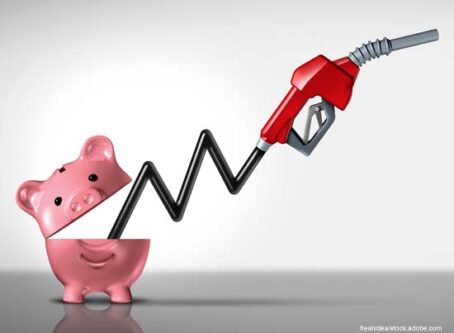Fuel supply chain concerns linger
In October, OOIDA President Todd Spencer spoke to CNN about recent supply chain issues and explained that unfortunately there was no quick fix to the problem.
Now, just over one month later, fueling stations along Interstate 5 in California are reportedly restricting drivers to a specific number of gallons or a set price limit due to supply issues.
On his scheduled stop at the TA Travel Center in Barstow, Calif., OOIDA tour trailer driver Marty Ellis said no fuel was available upon his arrival and officials at TA in Kingman, Ariz., also confirmed to him their own issues with fuel.
“I’ve seen where they just let it (the fuel) run out, and don’t ration – they just let you get as much as you can until the pumps run out,” Ellis said. “When I arrived in Barstow they were out and had the tape in front of the pumps. They are saying there’s not a shortage of fuel, but the truck drivers I’ve talked to out here aren’t noticing it anywhere other than the TA & Petros.”

Devastating flooding has also greatly affected portions of the West Coast and neighboring Canada recently.
Oil market analysis
In an effort to moderate prices in the U.S. as well as reduce global prices, President Joe Biden authorized the release of strategic oil reserves on Tuesday.
Stratas Advisors, a global consultancy providing full spectrum coverage of the energy sector and related industries, is forecasting supply and demand will be moving toward alignment if there is no disruption to the current trends.
“Currently, crude inventories (excluding strategic reserves) from the global or U.S. perspective are not unusually low,” John E. Paisie, president of Stratas Advisors, said. “Since 2015, the lowest crude inventories were 394 barrels, which was reached in September 2018. Currently, U.S. crude inventories are 433 million barrels.”
A December OPEC+ meeting is scheduled to discuss future supply increases. OPEC+ is typically cautious in terms of increasing barrels, Paisie said.
“OPEC+ only wants to add supply to keep the oil market stable and oil prices from spiking,” Paisie said. “OPEC+ does not want oil prices to move past $80 for any substantial period of time, in part, because of concerns of the impact on the sustainability of the economic recovery and the long-term impact on demand.”
EIA data
The Energy Information Administration’s weekly petroleum status report released on Nov. 24 indicated U.S. crude oil refinery inputs averaged 15.6 million barrels per day for the week ending Nov. 19. This was an increase of 243,000 barrels from the previous week. Refineries operated at 89% capacity over the same time frame, while gasoline production increased to 10.1 million barrels per day.
The report also stated U.S. crude oil imports averaged 6.4 million barrels per day, up 245,000 barrels from the previous week.
Lastly, U.S. commercial crude oil inventories (excluding the Strategic Petroleum Reserve) increased by 1 million barrels from last week. However, those inventories are 7% below the five-year average for this time of year, and total commercial petroleum inventories decreased by 6 million compared to a week ago.
EIA’s full analysis can be found at EIA.gov/petroleum/supply/weekly/. LL









